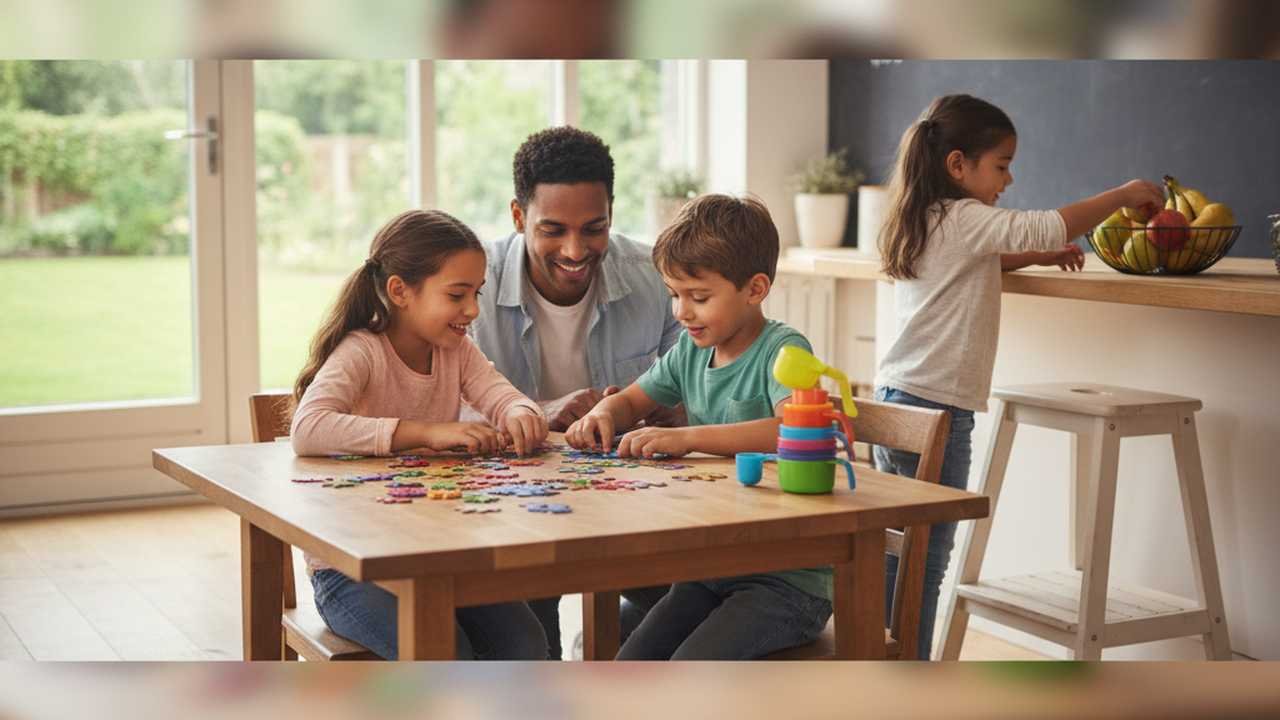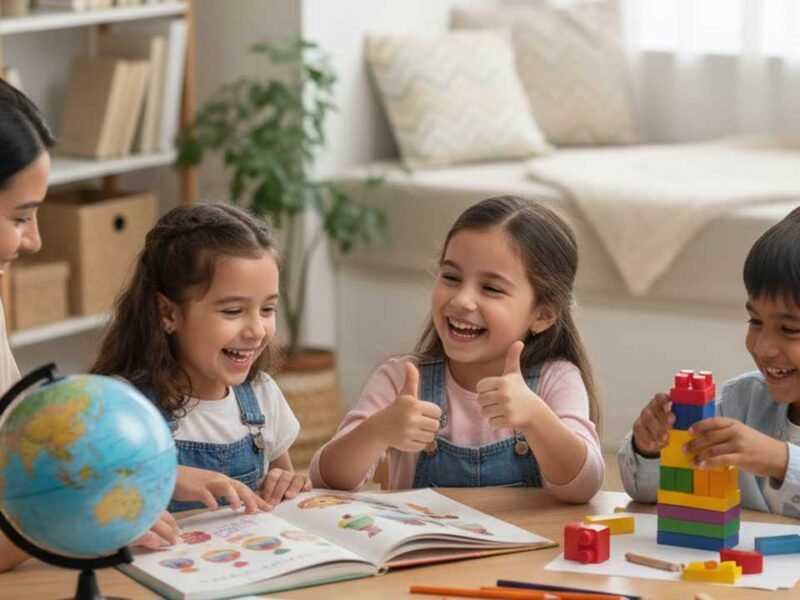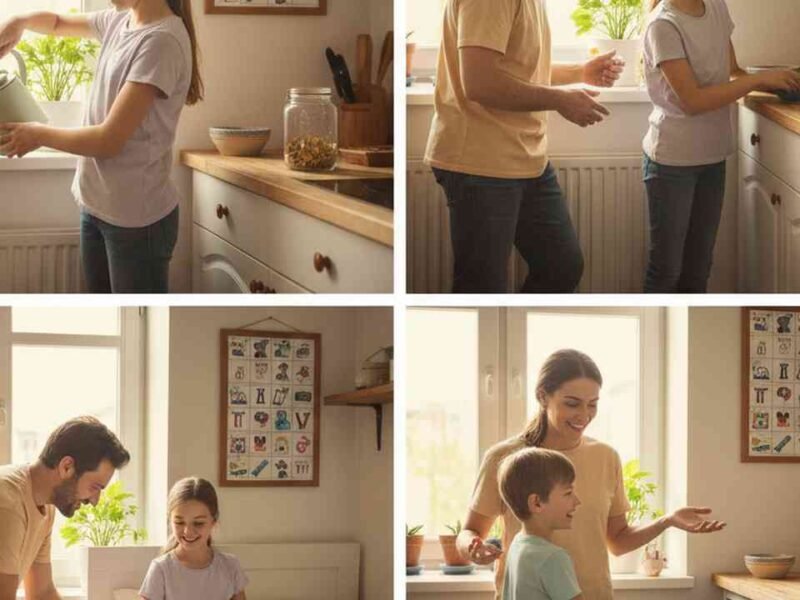Unlock the Power of Everyday Learning
Everyday life is a goldmine of opportunities for teaching children problem-solving skills, yet most parents and educators overlook these moments, letting them slip by unnoticed. Imagine your child trying to figure out how to fit a puzzle piece perfectly into place or attempting to balance a tower of blocks that teeters dangerously on the edge. These seemingly simple tasks are actually intricate exercises in logical thinking, creativity, and persistence. By consciously turning ordinary experiences into dynamic learning moments, you can instill skills that last a lifetime. The urgency is palpable: children who are not guided through problem-solving during these formative years risk falling behind in adaptability and critical thinking. Real-world experiences, from negotiating who gets the last cookie to planning a backyard scavenger hunt, offer tactile, sensory-rich opportunities to foster decision-making skills. Seize these moments now, because the longer they pass without engagement, the more difficult it becomes to cultivate intuitive problem-solving habits.
Integrating Problem-Solving Into Daily Routines
Daily routines are often dismissed as mundane, yet they provide an extraordinary stage for cognitive development. Picture a morning breakfast scenario: a child must figure out how to pour cereal without spilling, navigate a sticky jam jar lid, or decide how to stack pancakes without them toppling. Each of these tasks subtly demands reasoning, spatial awareness, and experimentation. Turning routines into learning experiences requires deliberate attention, patience, and guidance. Encouraging children to think through challenges, ask questions, and test hypotheses develops resilience and fosters a sense of agency. Studies show that children who regularly engage in problem-solving exercises within everyday contexts demonstrate higher levels of executive function and creative reasoning. Parents who neglect these opportunities may unknowingly deprive their children of critical skill-building moments. For those seeking immersive, hands-on experiences, museum education internships provide structured programs where children interact with exhibits, solving puzzles, decoding artifacts, and making connections between history, science, and art.
Exploring the Role of Play in Problem-Solving
Play is not merely a pastime; it is the arena where abstract thinking becomes concrete. When children engage in imaginative play, whether building a Lego metropolis or orchestrating a pretend market, they navigate complex scenarios that demand strategic thinking, collaboration, and conflict resolution. Play environments rich in sensory stimuli – vivid colors, textured materials, and interactive elements – amplify engagement and deepen cognitive development. The FOMO factor is intense: children who miss out on structured, play-based problem-solving experiences risk lagging behind peers who regularly encounter these cognitive challenges. Observing a child negotiate roles in a game of “restaurant” or experimenting with water flow in a homemade science project reveals the depth of learning occurring beneath the surface of playful activity. Research from trusted educational institutions confirms that incorporating hands-on, playful problem-solving opportunities enhances memory retention, critical reasoning, and adaptive learning. This is precisely why immersive programs like museum education internships are invaluable – they provide curated, interactive play that doubles as rigorous cognitive training.
Using Household Chores as Learning Opportunities
Household chores often provoke groans, yet they are fertile ground for cultivating analytical thinking. Consider the challenge of organizing a cluttered room: children must categorize items, prioritize tasks, and develop efficient strategies to accomplish their goals. This process naturally teaches planning, sequencing, and evaluation skills. Cooking, another daily activity, introduces measurements, timing, and problem-solving under real-world constraints. Imagine the sensory thrill as a child stirs a bubbling sauce, adjusts seasoning, or rearranges ingredients to achieve the perfect balance – the room filled with enticing aromas, the vibrant colors of fresh vegetables providing a visual feast. This type of experiential learning is immediate, tangible, and memorable, ensuring lessons stick. Programs such as museum education internships extend this concept, offering children structured challenges that mirror real-world problem-solving scenarios, with expert mentorship and tangible rewards for creative solutions.
Harnessing Nature and Outdoor Exploration
Nature provides an unrivaled classroom, rich with unpredictable challenges and sensory stimulation. A hike through a forest, a visit to a botanical garden, or even a stroll through a city park can spark curiosity and demand problem-solving. Children encounter obstacles such as uneven terrain, insects, or navigating trails, requiring planning, adaptability, and observational skills. Sensory engagement is heightened: the scent of damp earth, the crunch of leaves underfoot, the kaleidoscope of colors shifting with sunlight filtering through trees. These experiences cultivate resilience, persistence, and spatial reasoning in ways that indoor activities often cannot match. The urgency is undeniable – without intentional guidance, these natural learning moments may pass unnoticed. Participating in museum education internships complements outdoor learning by providing structured environments where children can observe, experiment, and solve real-life challenges in science, history, and art, reinforcing skills developed in unstructured outdoor settings.
Leveraging Storytelling and Reading
Stories are powerful tools for teaching problem-solving, offering scenarios that challenge children to predict outcomes, infer motives, and propose solutions. Reading aloud or engaging in storytelling activities allows children to immerse themselves in vivid worlds, full of colorful characters and complex plots. The sensory richness of descriptive language – smoky castle halls, roaring dragons, whispering winds – engages imagination and stimulates analytical thinking. Children learn to connect cause and effect, evaluate alternative strategies, and anticipate consequences, building mental models that translate to real-life problem-solving. The stakes are high: children who lack exposure to rich narratives may miss critical opportunities to develop empathy, reasoning, and foresight. Structured experiences such as museum education internships often include interpretive storytelling, combining literature, history, and interactive exhibits to cultivate a sophisticated understanding of problem-solving in historical and cultural contexts.
Encouraging Collaborative Problem-Solving
Collaboration magnifies learning, exposing children to diverse perspectives, communication strategies, and joint decision-making processes. Group activities, whether a science experiment at home or a team challenge in a museum setting, require negotiation, delegation, and creative synthesis. Sensory experiences – sharing materials, handling tools, observing reactions – reinforce engagement and retention. Children who regularly collaborate develop empathy, resilience, and the ability to approach problems from multiple angles. The FOMO is significant: children without access to collaborative problem-solving may struggle in social, academic, and professional contexts later in life. Participating in museum education internships offers a structured environment where children tackle challenges collectively, guided by experts who provide real-time feedback, ensuring skills are honed efficiently and with measurable outcomes. Verified data from educational research supports that collaborative problem-solving activities improve cognitive flexibility and social competence, establishing a clear advantage for participants.
Using Technology and Interactive Learning Tools
Technology, when used intentionally, transforms everyday problem-solving into dynamic, interactive experiences. Educational apps, virtual simulations, and interactive museum exhibits immerse children in challenges requiring critical thinking, trial-and-error experimentation, and adaptive strategies. The tactile engagement – dragging elements on a touchscreen, assembling virtual structures, or manipulating digital tools – creates a multi-sensory learning environment. The urgency is acute: children without exposure to these modern learning platforms risk falling behind technologically and cognitively. Programs like museum education internships often incorporate augmented reality, gamified problem-solving tasks, and interactive workshops, bridging the gap between digital literacy and real-world application. Trusted institutions ensure these platforms meet strict security, licensing, and educational standards, providing verified payouts for skills gained and responsive support for parents and mentors, guaranteeing a safe, enriching, and high-impact experience.
Building Confidence Through Achievable Challenges
Confidence is inseparable from problem-solving ability. Children thrive when they face challenges that are attainable yet stretch their cognitive capacities. Successfully navigating these challenges – completing a complex puzzle, designing a creative solution, or leading a small team project – releases dopamine, reinforcing persistence, and resilience. Sensory and emotional engagement is powerful: the tactile satisfaction of a solution fitting perfectly, the visual reward of a completed project, the auditory cheer of peers celebrating success. Delaying these opportunities risks diminishing self-efficacy and curiosity. Structured experiences such as museum education internships are meticulously designed to provide incremental challenges, ensuring every child experiences tangible success while building sophisticated reasoning skills. Verified data from educational psychology studies shows that children who engage in these structured problem-solving experiences demonstrate measurable improvements in executive functioning, creativity, and confidence, emphasizing the immediate need to act.
Immediate Steps You Can Take Today
The time to act is now. Every moment that passes without intentional problem-solving engagement is an opportunity lost. Begin by incorporating deliberate, sensory-rich challenges into daily routines, encouraging exploration, creativity, and collaboration. Engage children in household tasks, outdoor adventures, interactive reading, and technology-driven problem-solving platforms. For a transformative experience, museum education internships provide a curated, hands-on, immersive program designed to accelerate problem-solving skills while building confidence, creativity, and critical thinking. These programs are verified, licensed, and backed by responsive support, ensuring both safety and measurable outcomes. Spaces fill quickly, and the fear of missing out is real – early enrollment guarantees your child gains exposure to cutting-edge experiential learning environments, real-world challenges, and mentorship from trusted professionals. Don’t wait – every day without these rich, structured learning experiences is a lost chance to equip your child with lifelong skills.


